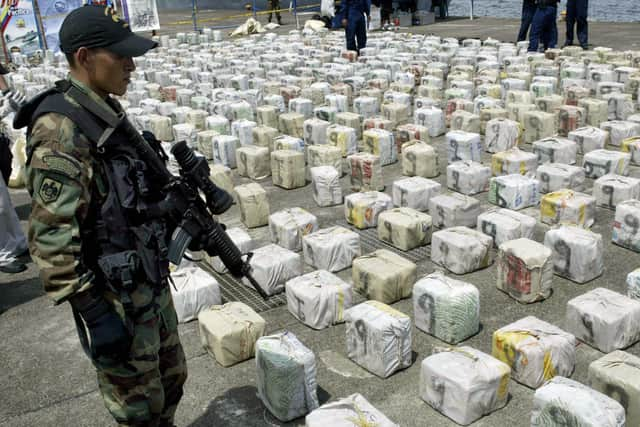Drug smuggling submarines: what are narco subs what are they made out of, how big are they, how are they used?
and live on Freeview channel 276
For more than 20 years, South American drug traffickers have been using submarines to reach Africa and Europe.
That’s according to Antonio Martinez Duarte, Chief Commissioner of the Narco Brigade in the Spanish National Police, who told the BBC so-called “narco subs” are “very hard to detect”.
Advertisement
Hide AdAdvertisement
Hide AdIt’s believed that hundreds of homemade submarines have been launched towards Europe, which is the second-largest market for cocaine after the US and is expanding quickly following a Covid pandemic slump.
There are even rumours that there is a mass graveyard of cocaine submarines in the middle of the Atlantic Ocean, near the Canary Islands and the Azores, that were purposefully sunk after their cargo had been successfully unloaded.
How are the submarines made and used?
If getting into a military submarine and sinking below the surface of the waves sounds claustrophobic enough for you, imagine doing it in a homemade submersible.
The BBC’s Nick Beake has described the captured narco-sub he was invited to explore as “20 metres (65 ft) long, built out of fibreglass and - remarkably - homemade.”
Advertisement
Hide AdAdvertisement
Hide Ad“It’s cramped, claustrophobic and incredibly primitive,” he added. “The sunlight tries to creep in from faint cracks in the walls. There is a steering wheel, a couple of basic dials and a rusted key still wedged in the ignition.
“You can understand why one prospective skipper took one look at the vessel and concluded it was a death trap.” But in this “primitive” sub, three men survived for 27 days and nights on a diet of energy bars and cans of sardines.


The trio, which included a former Spanish boxer and two Ecuadorean cousins, left the Brazilian rain forest and first travelled down the Amazon river. Their cargo was three tonnes of cocaine, worth more than $150 million (£121 million).
However, this wasn’t a profitable covert mission that was successfully completed, and several law enforcement organisations, including the UK’s National Crime Agency (NCA), had been following the sub’s journey as of late 2019.
Advertisement
Hide AdAdvertisement
Hide AdThe men encountered difficulties and scuttled their boat close to the Galician coast before being apprehended and imprisoned. The captured submarine is now displayed as a trophy in the car park of the Spanish police academy in Ávila.
The vehicle is one of only two such submarines to have ever been seized by authorities. Narco subs are typically built using materials such as fiberglass, which makes them difficult to detect by radar and other surveillance equipment.
The vessels are often constructed in remote jungle locations, and then transported by land to rivers or coastlines where they can be launched. Each previous secret mission would have been a huge success for the teams of mechanics who had been quietly building their ships primarily in Guyana and Suriname.
Where was the cocaine taken to?
According to police, each mission’s payload would have been delivered to the largest cocaine production facility they have ever discovered in Europe. The lab, dismantled in the Galician city of Pontevedra, had the ability to produce 200 kilos of pure cocaine daily, with a purity of 95%.
Advertisement
Hide AdAdvertisement
Hide Ad“This is a very important operation,” says Chief Commissioner Duarte. “It’s the first time in Europe that we found as much as one and a half tonnes of base cocaine paste.”
“This operation also confirms the links between Colombian and Mexican criminals that have joined Spanish gangs working in Spain,” Chief Commissioner Duarte says.
The paste is then processed into powdered cocaine to be sold on, bundled into brown packages each the size of a house brick.
Importers then pay €27-32,000 (£24-28,000) for each parcel; when they sell it on the streets, they at least double their money, with the only thing limiting their ability to make a profit being how much of their drug they mix with cheaper cutting agents.
Advertisement
Hide AdAdvertisement
Hide AdLaw enforcement agencies around the world have been working to intercept and seize narco subs, as they pose a significant threat to public safety and contribute to the illegal drug trade. However, the use of narco subs continues to be a significant problem, and drug cartels are constantly adapting their tactics to avoid detection and interception.
